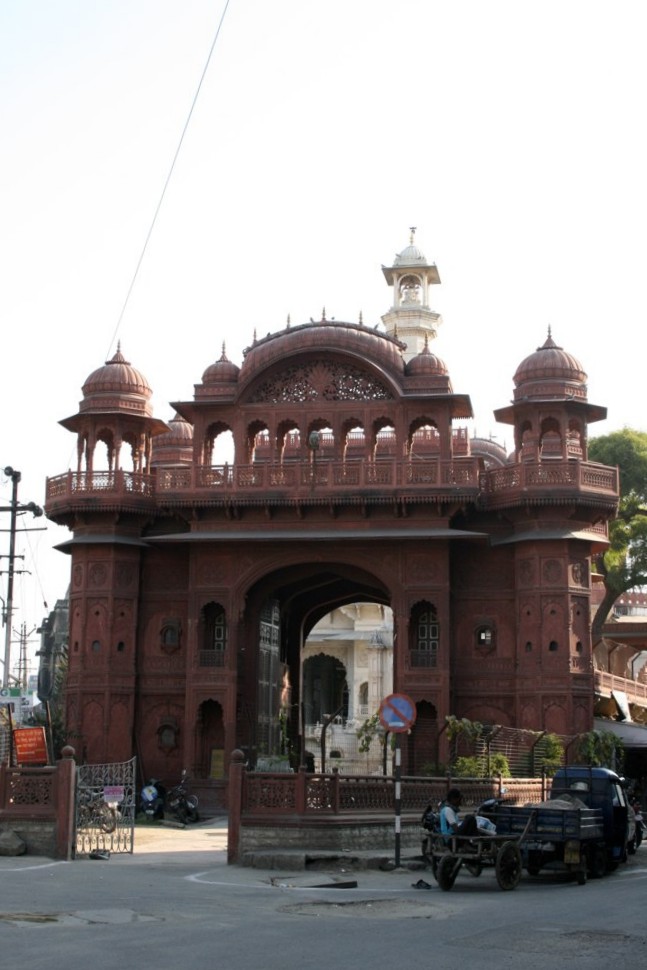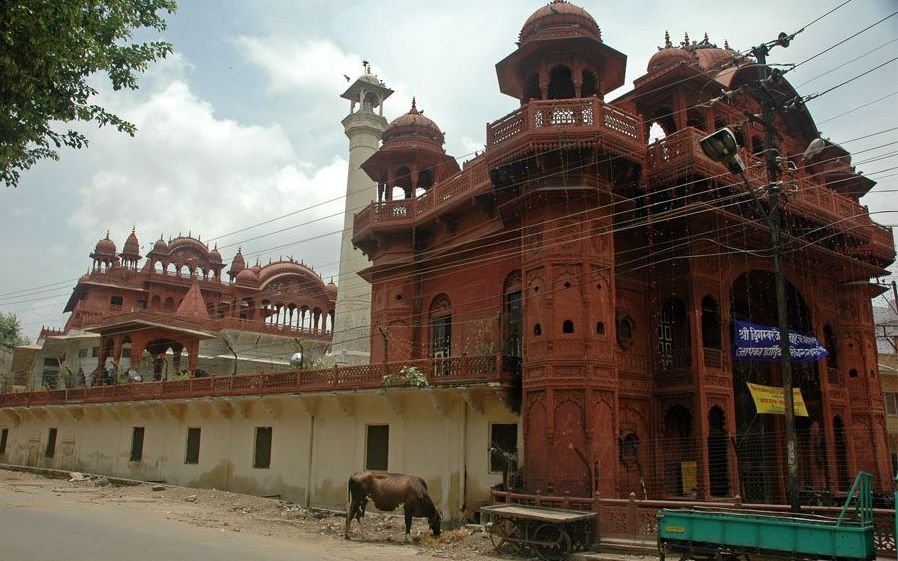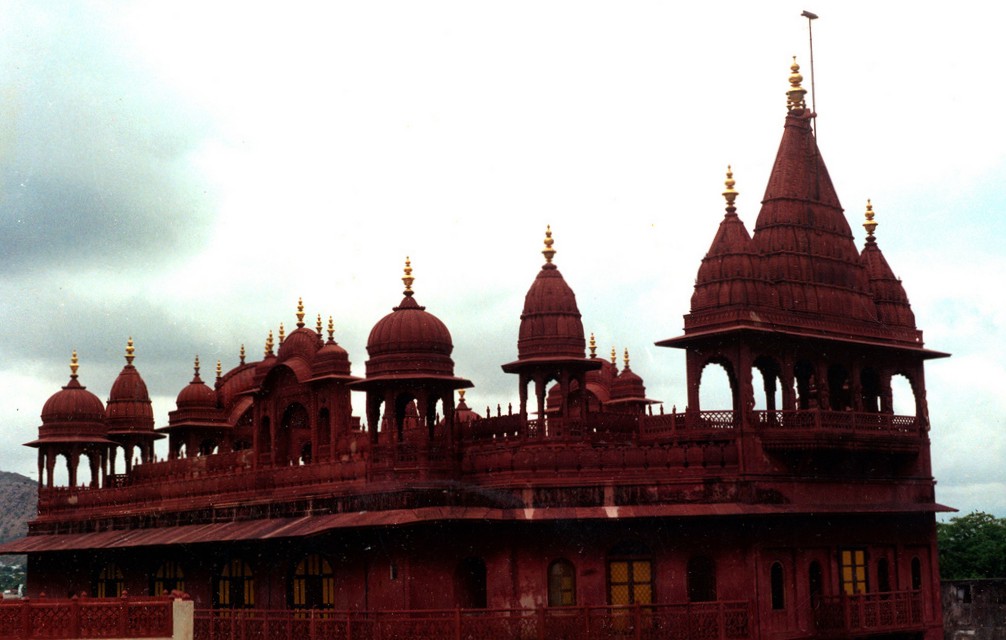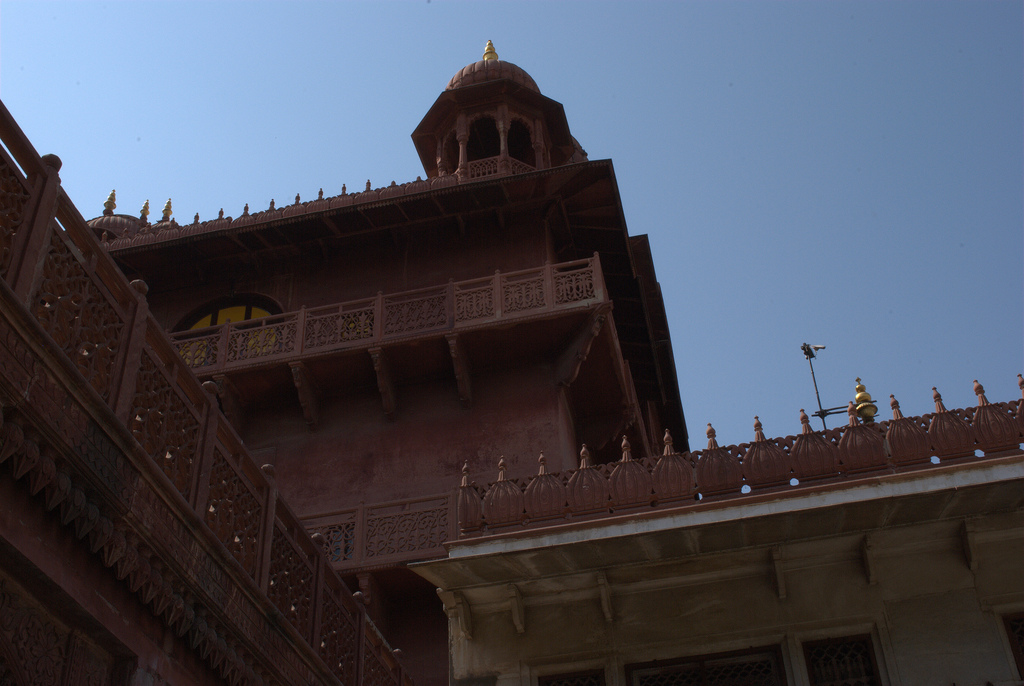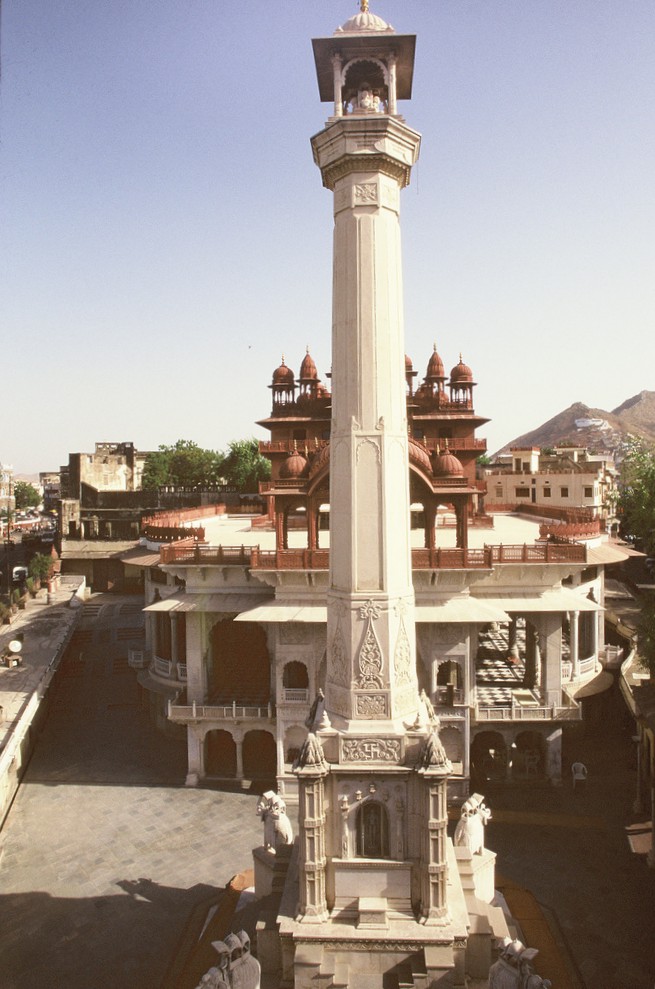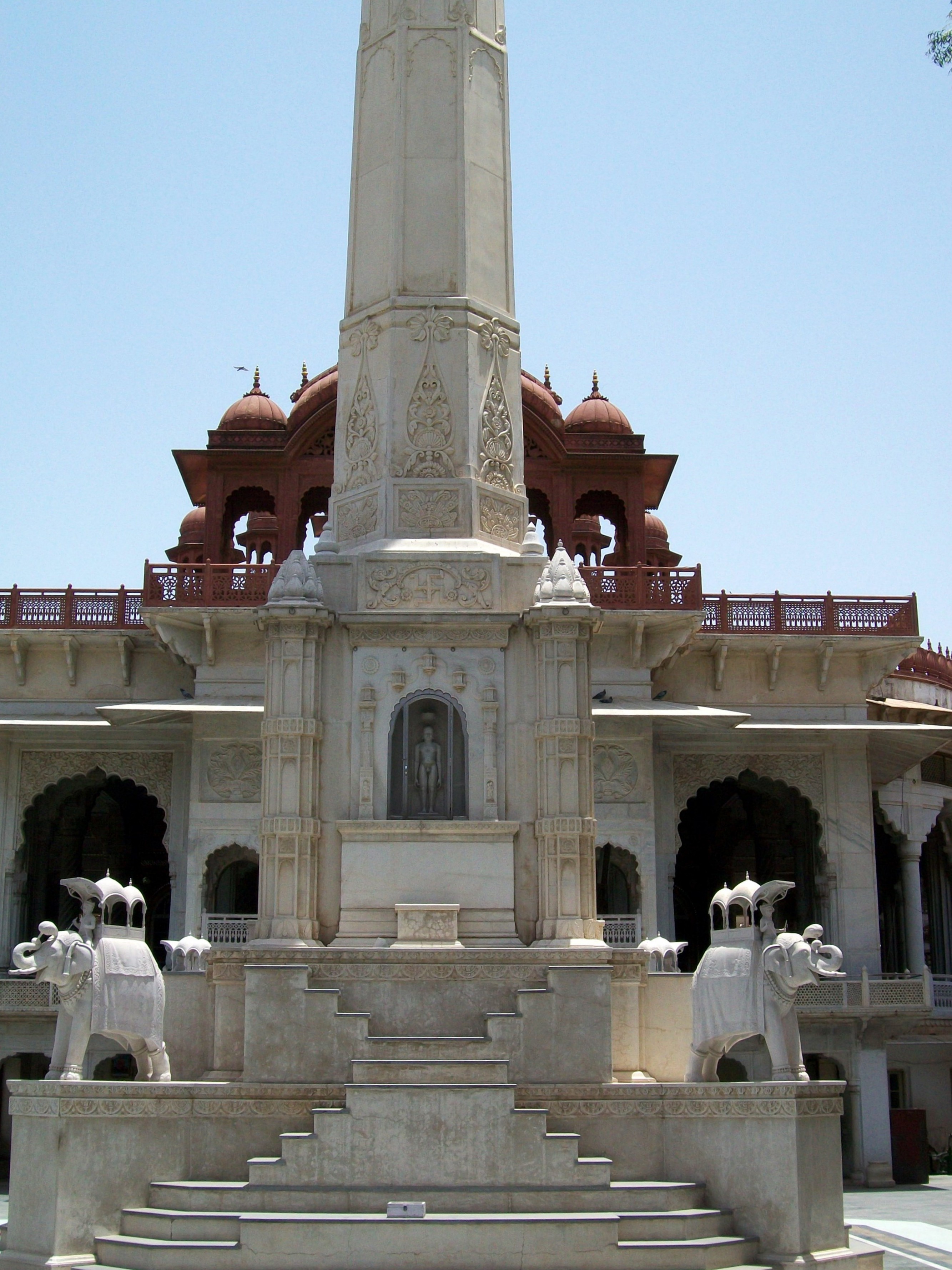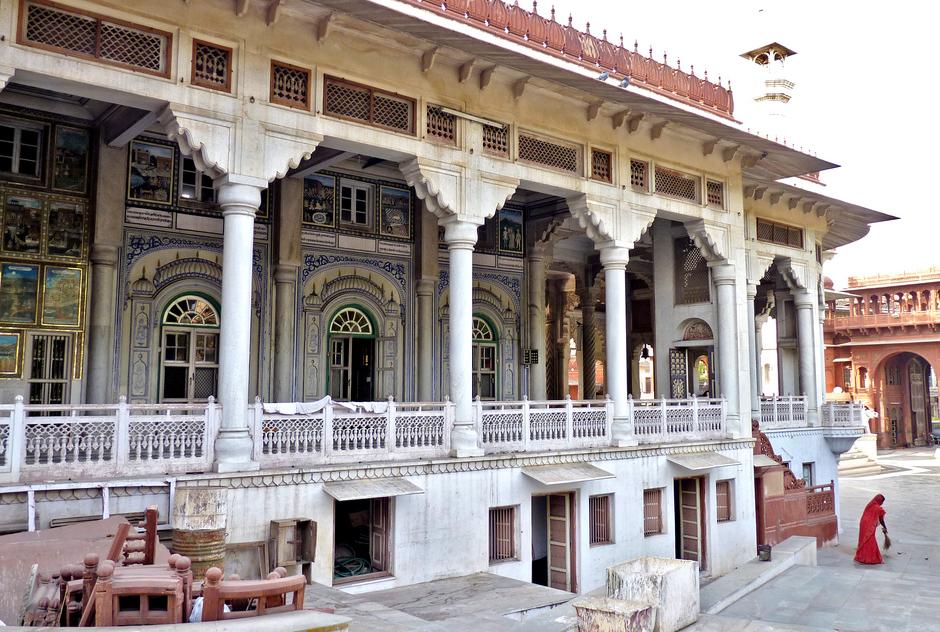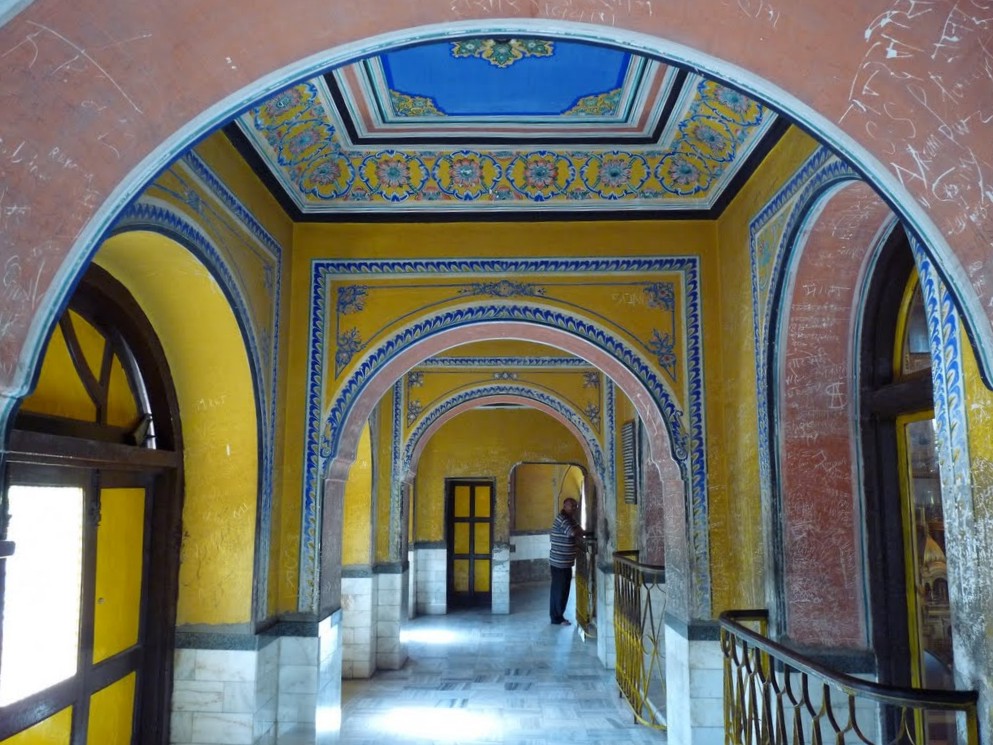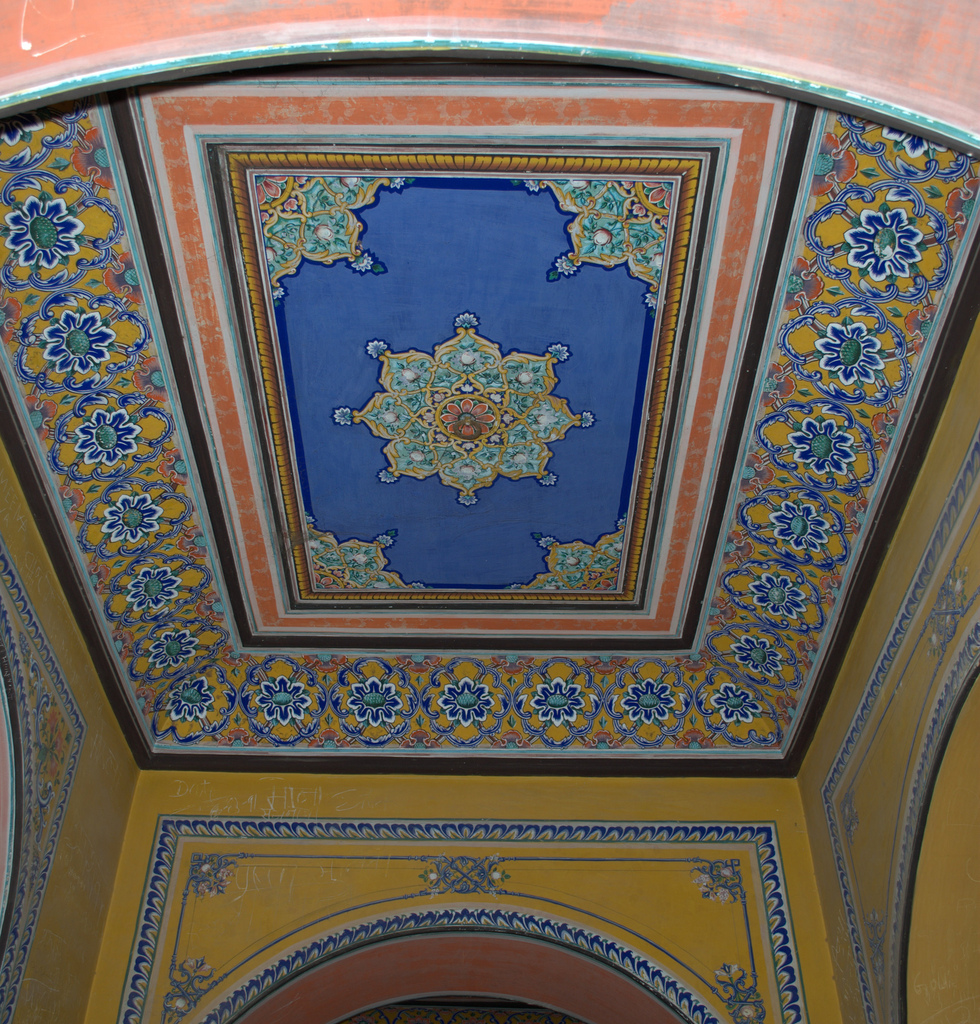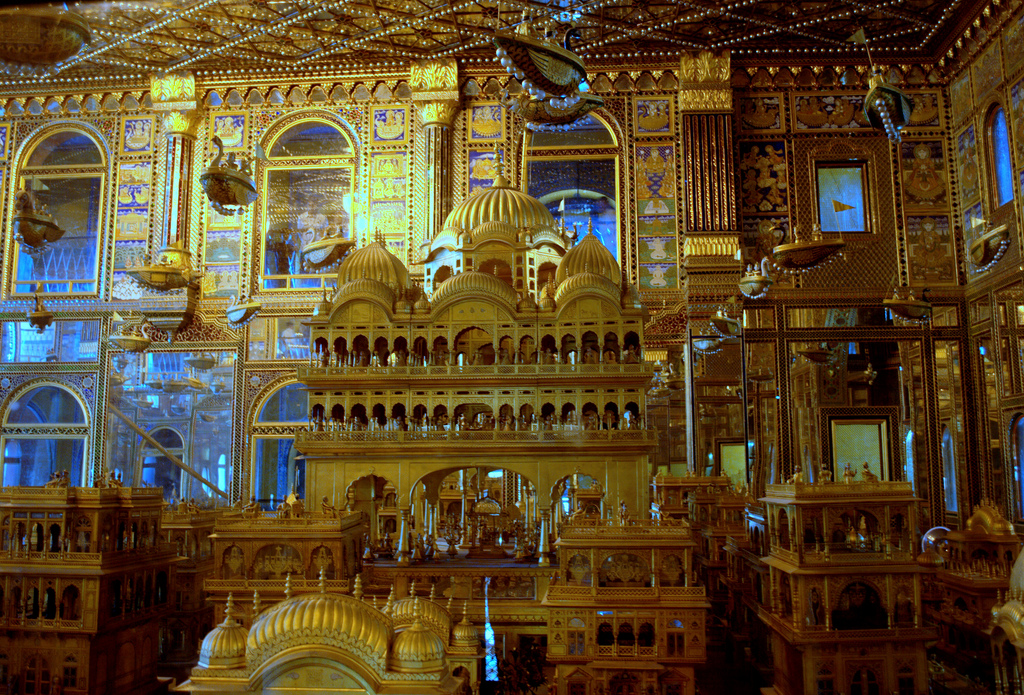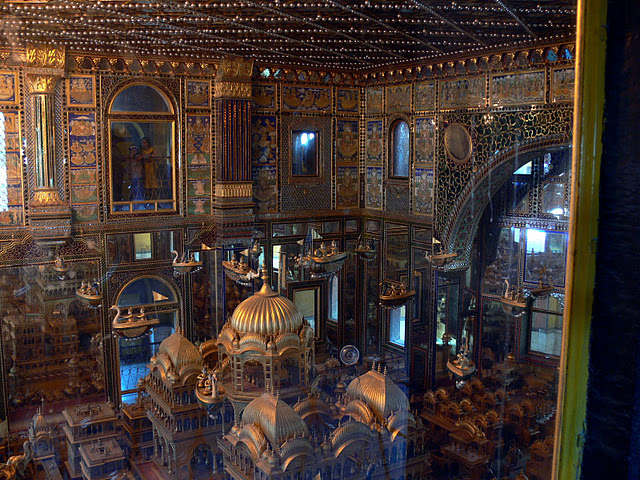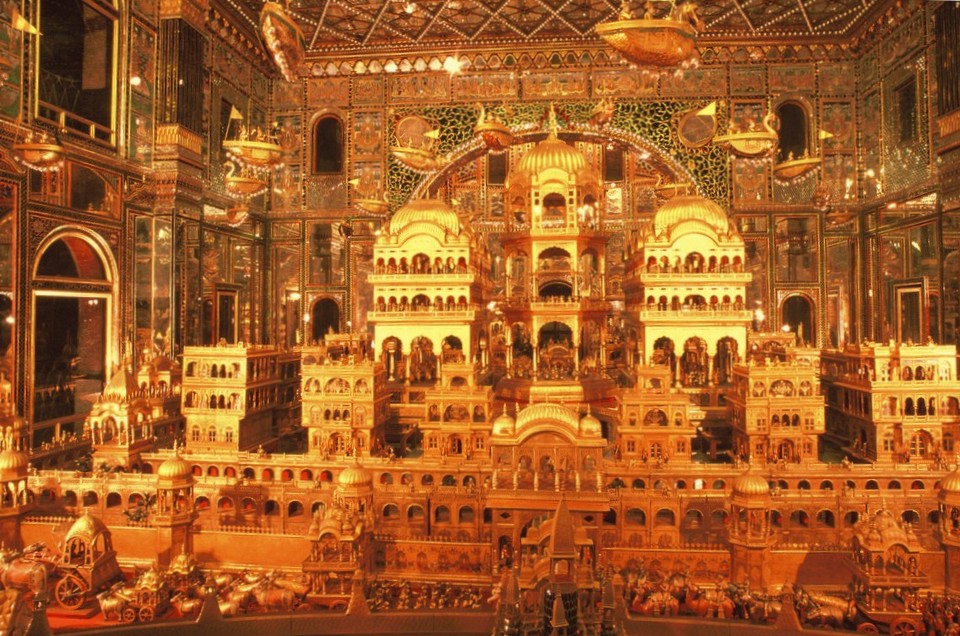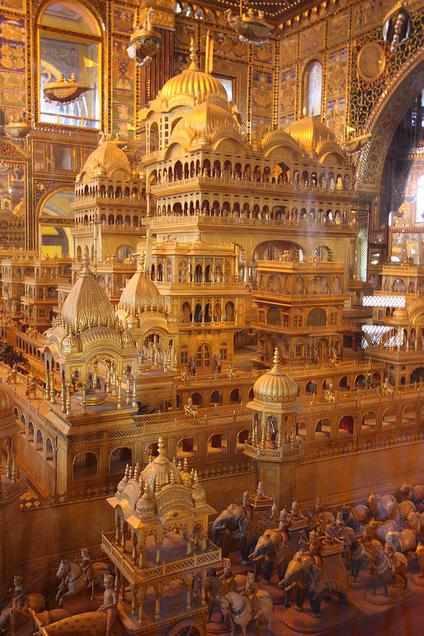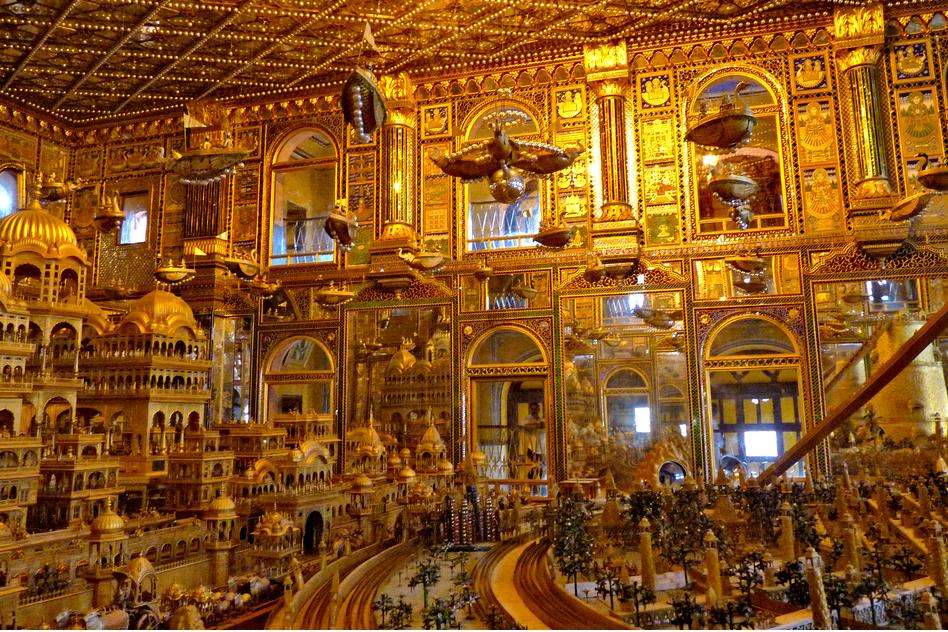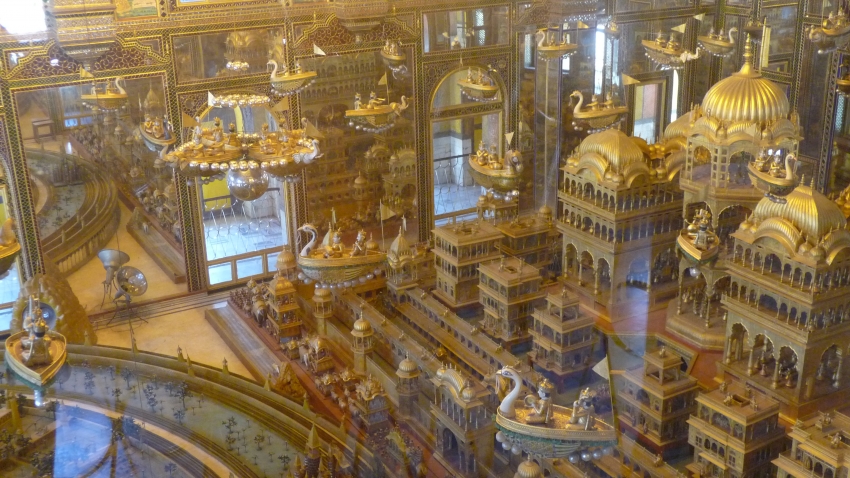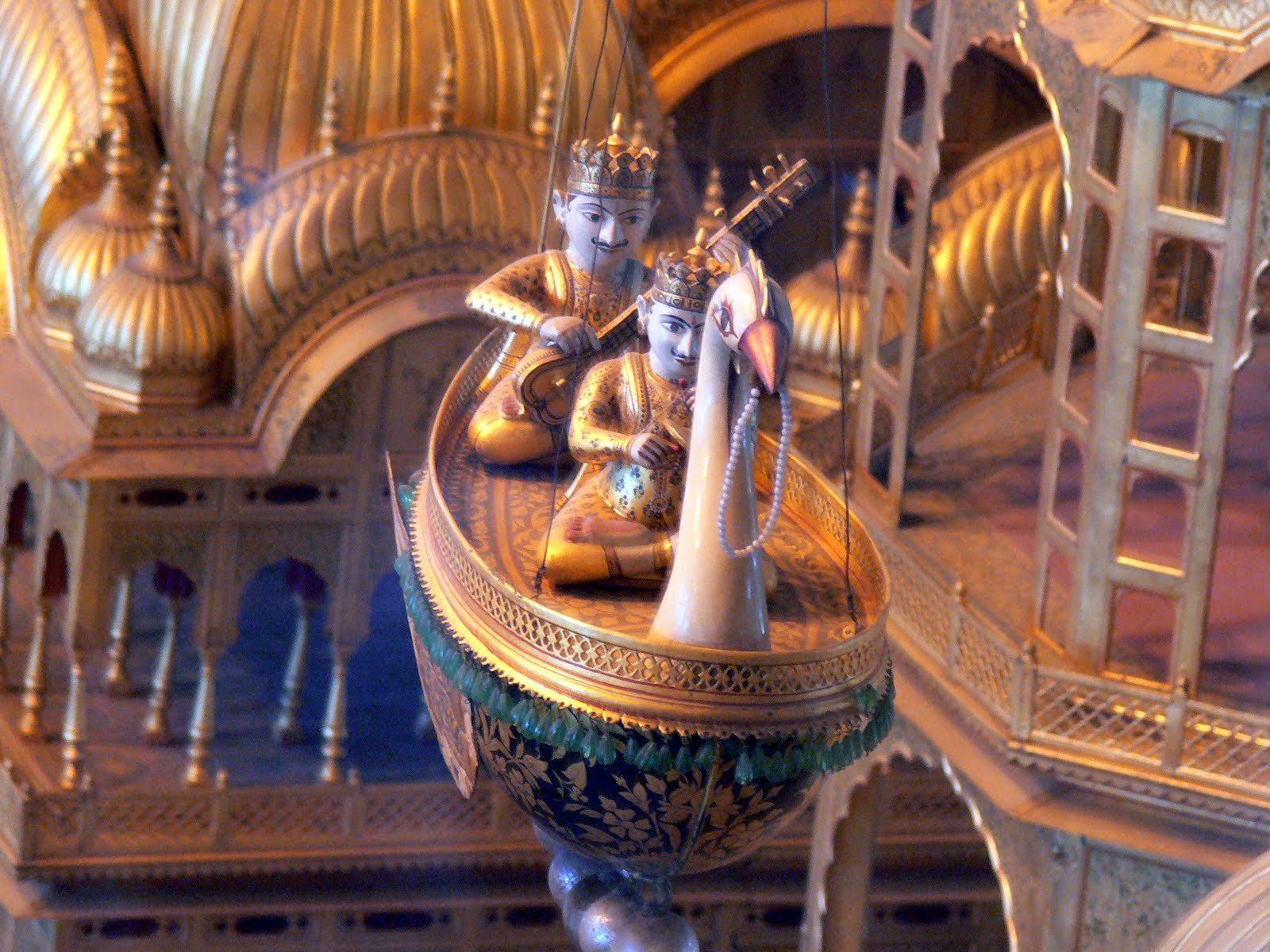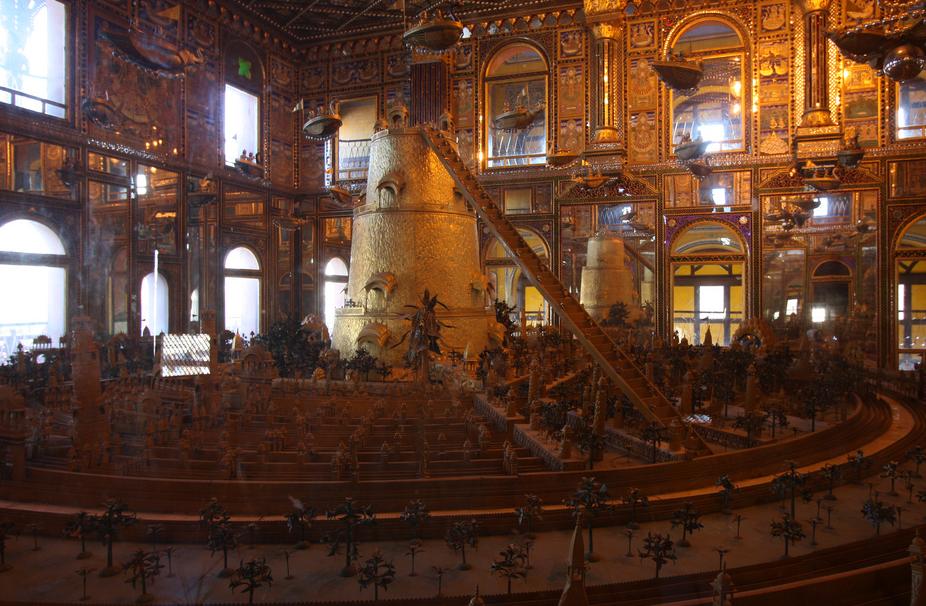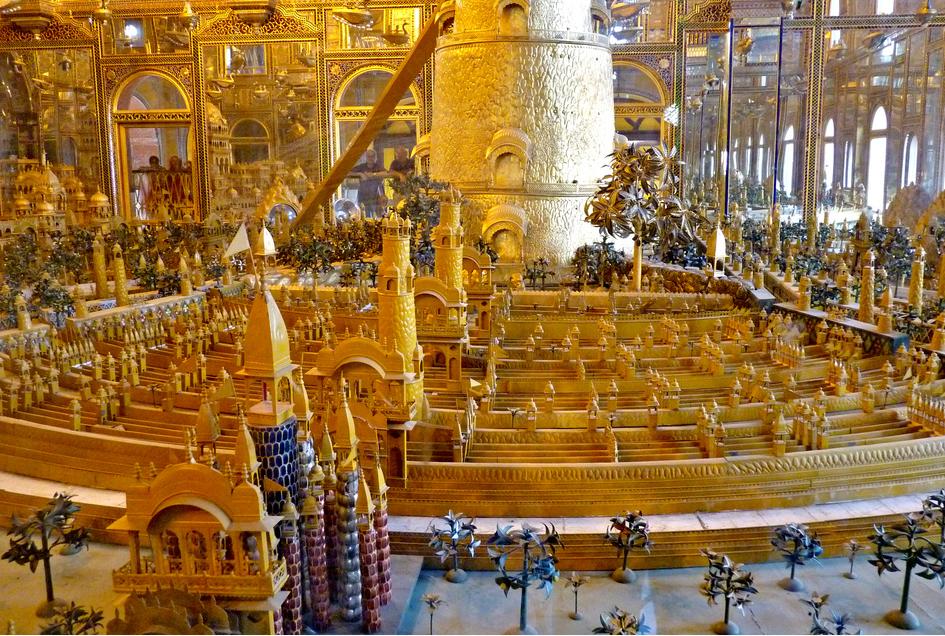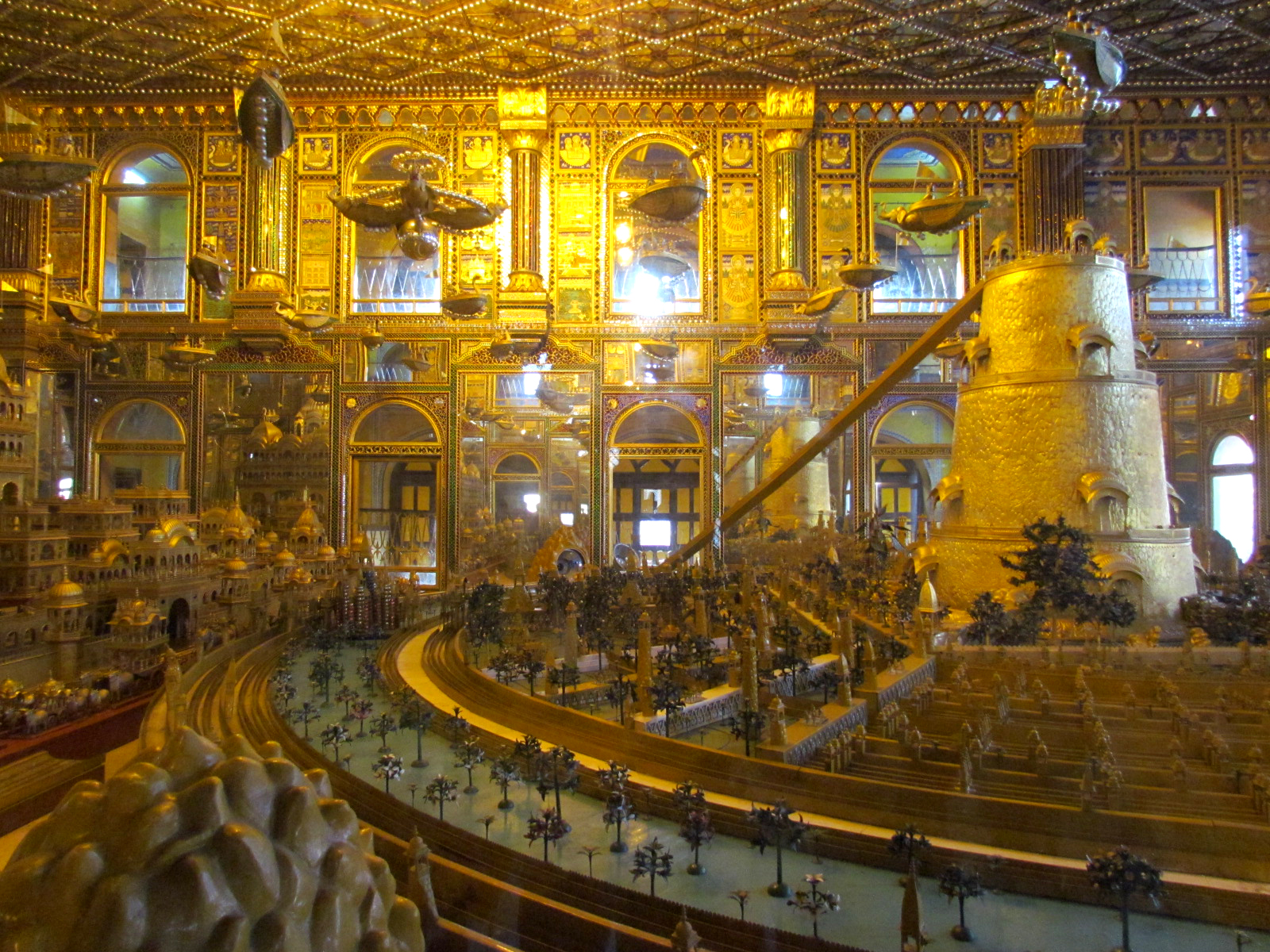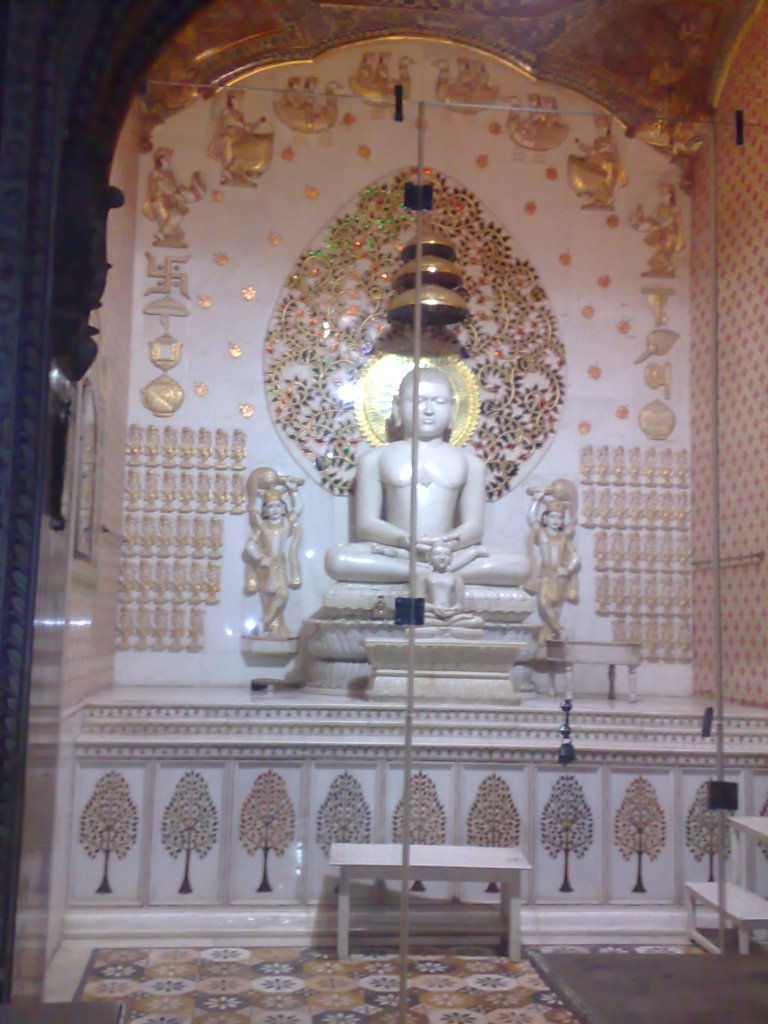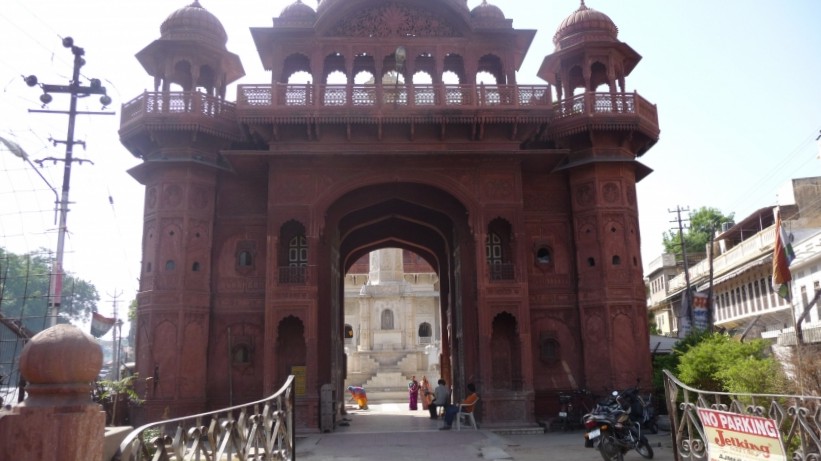Soniji Ki Nasiyan Temple at Ajmer
Projected and built in 1864-1895 by Seth Shri Mulchand Soni and finally completed by Gauravji, the Nagar Seth of Ajmer at this time, Soniji Ki Nasiyan is a Digambar Jain temple famous for its rich architecture. The main chamber of this red temple, known as the Swarna Nagari (City of Gold), has several gold-plated wooden figures, depicting characters in the Jain tradition. The entire hall is richly adorned by glass mosaic, precious stones, gold and silver work.
Seth Shri Mulchand Soni constructed this temple in two phases having separate entrance in 1865 and hence it is also called as Soniji ki Nasiyan. Made up of red stones it is famous as Lal Mandir and also as Siddhkut Chaityalay Nasiyanji. The first phase consists the model of thirteen Dwip (islands) among which two are more descriptive. Models of Ayodhya and Panchkalyan have been kept in the second phase of Red temple. The wooden gilt in the double storeyed hall exhibits images from the Jain mythology, describing the ancient Jain concepts. Lakes, Forts and Museums in Ajmer. The hall displays a series of large gold plated wooden figures depicting legends from Jain mythology. The entire hall is richly adorned by glass mosaic, precious stones, gold and silver work. The place is also popularly called Soni Ji Ki Nasiyan.
Kurt Titze, in his book Jainism. A Pictorial Guide to the Religion of Non-Violence (Delhi: Motilal Banarsidass Publishers, 1998, p. 143), writes on Soniji Ki Nasiyan:
"Ajmer's main attraction is - for the Jainas - the prominently situated Nasiayan Digambara Temple, or rather the two-storied Svarana Nagara Hall behind the temple, better known as the Museum. Both the temple and the museum were built and are still owned by the Sony family of Ajmer. The temple, dedicated to Rishabha or Adinatha in 1865, was constructed of red sandstone in a matter of a few years, but it took twenty-five years, from 1870 to 1895, to fashion - by artisans at Jaipur - the thousands of individual parts required to assemble a three dimensional replica of the story of Rishabha in accordance with an old manuscript by Acharya Jinasena.
The thought to have such a three dimensional model for eduational purposes occurred to Seth Moolchand Soni, who was born in 1830, only after the completion of the temple. His death in 1891 prevented him from seeing his ambitious work in its finished state.
In many Jaina temples one sees painted or figurative representations of the 'five auspicious events' (pancha-kalyanak) in the life of every Tirthankara: conception, birth, renunciation, enlightenment, and salvation (moksha or nirvana). The one at Ajmer, now over a hundred years old, is by far the largest and most artistic plastic representation of that much-loved mythological narrative. A specially designed hall of 24.3 m by 12.2 m had to be build to display it effectively. It is open to visitors of all religions every day all the year round for a very small entry fee."
Impressions of Soniji Ki Nasiyan Temple at Ajmer
